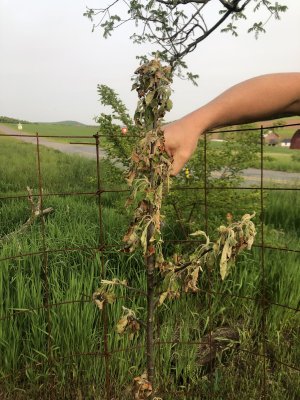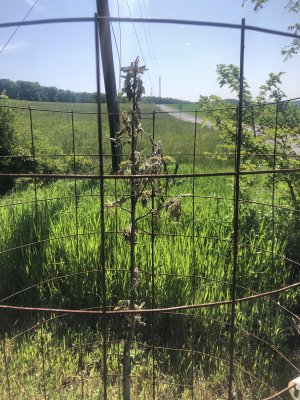Derek Reese 29
5 year old buck +
Have this little Arkansas Black that has been in the ground for 2+ years. I have in other posts talked about it’s pruning. I took off a limb as a few of the fellas suggested then we haven’t had a good rain since. Also, this tree is planted pretty close to a black walnut that is just leading out and there are cedars within about 30 yards. (Though Arkansas black is supposed to be very disease resistant). Any idea what might by happening to this tree to cause the leaves to look droopy and turn brown and wither..it was very good looking till about a week ago..what puzzles me is there is a Galarina within 15 feet of this tree that is thriving..any suggestions welcome would really like to save this tree if possible..


Last edited:
